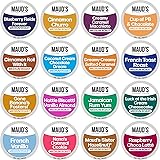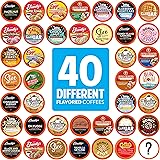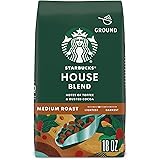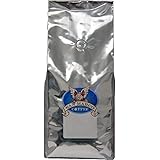Discovering the Perfect Electric Kettle: A Guide to Modern Boiling Solutions
As highlighted in the video above, selecting the right electric kettle is an essential step toward enhancing daily routines, whether for a morning cup of coffee, a relaxing evening tea, or preparing instant meals. The convenience, speed, and safety offered by modern electric kettles have transformed them from simple appliances into indispensable kitchen tools. This guide delves deeper into the features and considerations that are paramount when choosing a top-tier electric kettle, expanding on the excellent selections reviewed in the accompanying video.
The Evolution of Boiling: Why Electric Kettles Are Preferred
The transition from traditional stovetop kettles to their electric counterparts has been largely driven by advancements in technology and a growing demand for efficiency and safety. An electric kettle is not merely a faster way to heat water; it represents a significant upgrade in kitchen functionality.
1. Unmatched Speed and Energy Efficiency: One of the primary advantages of an electric kettle is its rapid boiling capability. With models boasting wattages typically ranging from 1100W to 1500W, water can be brought to a rolling boil in a matter of minutes, significantly quicker than many stovetop methods. For example, some advanced models are noted to boil a single cup in as little as 90 seconds. Furthermore, many electric kettles are designed to be remarkably efficient, often consuming up to 50% less energy than traditional stovetop kettles. This translates to reduced daily electricity use and a quicker start to your day.
2. Enhanced Safety Mechanisms: Safety is a paramount concern in any kitchen appliance, and electric kettles excel in this regard. Key features such as automatic shut-off and boil-dry protection are now standard. Automatic shut-off ensures that the heating element is deactivated once the water reaches its boiling point, preventing over-boiling and unnecessary energy consumption. Boil-dry protection takes safety a step further, switching off the heating element if no water is detected in the kettle, thereby safeguarding the appliance from damage and minimizing fire hazards. Additionally, many models are equipped with heat-resistant handles and scald-proof lids, which are designed to prevent accidental burns during pouring.
3. Effortless Convenience and Design Integration: Modern kitchens benefit greatly from appliances that are both functional and aesthetically pleasing. Electric kettles are available in a wide array of designs, materials, and colors, allowing them to complement any decor. Features like cordless serving, 360-degree swivel bases, and integrated cord wrap systems contribute to a clutter-free countertop and ease of use. The inclusion of clear water level windows and removable filters also simplifies refilling and maintenance.
Essential Features for the Optimal Electric Kettle Experience
When an electric kettle is being selected, several key features should be considered to ensure it meets specific needs and preferences. These attributes contribute significantly to both performance and user satisfaction.
Precision Temperature Control: A Connoisseur’s Choice
For tea and coffee enthusiasts, precise temperature control is an invaluable feature. Different types of tea and coffee require specific water temperatures to extract optimal flavor profiles without scorching delicate leaves or over-extracting bitter compounds. Models such as the Cuisinart 1.7-Liter and Breville IQ Kettle exemplify this, offering multiple preset temperature settings:
- 160°F (71°C) is often selected for delicate teas.
- 175°F (79°C) is ideal for green tea, preventing bitterness.
- 185°F (85°C) is specified for white tea, preserving its subtle notes.
- 190°F (88°C) is commonly used for oolong tea.
- 200°F (93°C) is the recommended temperature for French press coffee, allowing for full flavor development without scalding the grounds.
- Boil (212°F / 100°C) is reserved for black tea, herbal infusions, instant cocoa, oatmeal, and noodles.
Many kettles with this feature also include a “keep warm” option, which maintains the set temperature for periods ranging from 20 to 30 minutes, or even up to two hours in some premium models. This ensures that a second cup can be poured without reheating.
Material and Construction: Durability and Purity
The materials used in an electric kettle’s construction directly impact its durability, heat retention, and water purity. Common materials include:
- Stainless Steel: Valued for its durability, resistance to corrosion, and sleek appearance. Many kettles feature a 304 food-grade stainless steel inner pot and concealed heating elements, which are known to extend the appliance’s lifespan and prevent direct contact between water and heating coils.
- Borosilicate Glass: Often chosen for its visual appeal, allowing users to watch the water boil. Borosilicate glass is heat-tempered, stain-resistant, and less likely to leach chemicals, making it a popular BPA-free option. Kettles like the OVENTE Glass Electric Kettle frequently feature this material.
- BPA-Free Plastics: Essential for health-conscious consumers, ensuring that no harmful chemicals leach into the drinking water. Many parts of electric kettles, especially those that come into contact with water, are now specifically designed to be BPA-free.
The presence of a Strix thermostat, a British-engineered component, is often highlighted as a mark of reliability and superior performance in an electric kettle, contributing to its consistent and safe operation.
Capacity and Design: Catering to Every Need
Electric kettles are offered in various capacities, typically ranging from 1 liter to 1.7 liters (approximately 57 ounces), to suit different household sizes and usage patterns. A smaller 1-liter kettle is often ideal for individuals or small families, while a 1.7-liter model is well-suited for larger households or entertaining guests.
Beyond standard designs, specialized options are available:
- Gooseneck Kettles: Specifically designed with a long, slender spout, these kettles provide precise control over water flow, making them ideal for pour-over coffee methods where controlled pouring is crucial for optimal extraction. The Elite Gourmet gooseneck kettle is a prime example, often featuring digital temperature displays.
- Kettles with Infusers: For loose-leaf tea lovers, some electric kettles, such as the Vianté Electric Kettle, integrate a removable tea infuser. This allows for direct steeping of tea leaves within the kettle, simplifying the brewing process and offering a comprehensive tea maker solution.
Convenience and User-Friendly Features
Modern electric kettles are designed with a host of features aimed at maximizing user convenience:
- Cordless Serving: The ability for the kettle to detach from its base allows for easy, cordless pouring and serving at the table or anywhere needed.
- LED Indicators: Blue LED lights are frequently incorporated, illuminating the kettle when it is in use or when water is heating, providing a stylish visual cue.
- Easy Cleaning: Wide openings, removable filters (often nylon or stainless steel), and lift-out lids simplify the process of refilling and cleaning the interior of the kettle.
- Drip-Free Spouts: Thoughtfully designed spouts help to control water flow, preventing spills and splashes during pouring.
The landscape of electric kettles continues to evolve, with innovations constantly emerging to enhance user experience and safety. By considering these detailed features and understanding their benefits, the ideal electric kettle can be chosen, ensuring countless perfect cups of hot beverages are enjoyed with ease and confidence.







